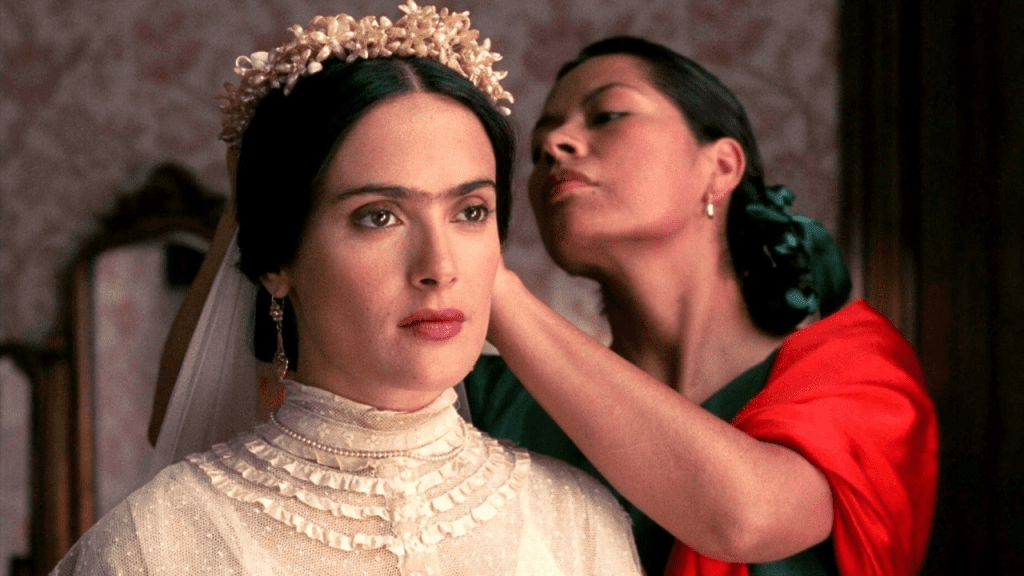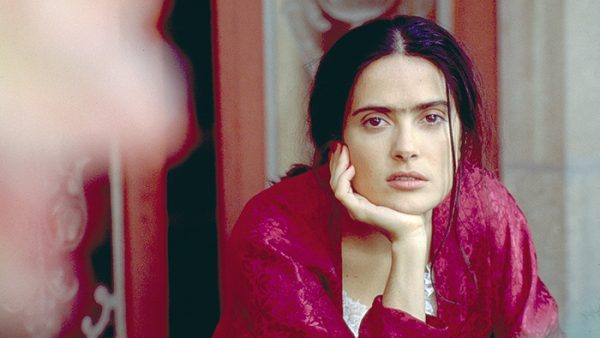Salma Hayek has always been a shining star in Hollywood, but her role in the 2002 film Frida elevated her to new heights. As an actress and producer, Hayek’s portrayal of the iconic Mexican artist Frida Kahlo was a labor of love, one that combined her passion, dedication, and talent into a masterpiece. Frida wasn’t just another biographical film; it was a tribute to an artist who broke barriers and redefined artistic expression. Let’s dive into why Hayek’s performance and the film itself have left an indelible mark on both cinema and cultural history.
Frida Kahlo: A Revolutionary Artist and Visionary

Frida Kahlo was more than a painter—she was a cultural icon, a feminist trailblazer, and a woman who channeled her pain into breathtaking art. Known for her self-portraits and surrealist themes, Kahlo’s works explored identity, suffering, and resilience. Her tumultuous relationship with fellow artist Diego Rivera and her struggle with physical pain after a near-fatal accident defined much of her life. These elements made Kahlo’s story ripe for cinematic adaptation, but capturing her essence was no easy feat.
When Salma Hayek took on the role of Frida, she not only stepped into the shoes of a legendary figure but also ensured that the story was told with authenticity and respect.
Salma Hayek: The Driving Force Behind Frida
Salma Hayek’s involvement in Frida went far beyond acting—she was the heart and soul of the project. Determined to bring Kahlo’s story to life, Hayek fought tirelessly to get the film made. As a producer, she played a pivotal role in assembling the right team, securing funding, and navigating Hollywood’s often challenging landscape for Latina-led films.
Her passion for Kahlo’s legacy was evident in every decision she made for the film. From casting to set design, Hayek ensured that every detail reflected the authenticity and vibrancy of Kahlo’s world. Her commitment to the project wasn’t just professional; it was deeply personal, rooted in her admiration for Kahlo as a Mexican icon and a feminist figure.
A Transformative Performance
Hayek’s portrayal of Frida Kahlo was nothing short of extraordinary. To step into the artist’s shoes, she underwent a dramatic transformation, adopting Kahlo’s distinctive features, such as her unibrow and traditional attire. But it wasn’t just about appearances—Hayek brought Kahlo’s fiery spirit, vulnerability, and resilience to life on screen.
To prepare for the role, Hayek immersed herself in Kahlo’s life. She studied the artist’s paintings, personal letters, and historical context to understand her emotional and psychological world. This dedication paid off, as Hayek delivered a performance that was raw, emotional, and deeply authentic. Her efforts earned her an Academy Award nomination for Best Actress, a milestone that recognized her talent and hard work.
Julie Taymor’s Vision and the Film’s Visual Brilliance

Frida wasn’t just an acting triumph; it was also a visual masterpiece. Directed by Julie Taymor, the film blended elements of surrealism with traditional storytelling, mirroring Kahlo’s unique artistic vision. Taymor incorporated sequences inspired by Kahlo’s paintings, bringing her art to life and immersing viewers in her world.
The vibrant colors, intricate set designs, and symbolic imagery made the film a feast for the eyes. From the bustling streets of Mexico City to the intimate spaces of Kahlo’s studio, every frame was a visual delight. This attention to detail not only honored Kahlo’s art but also enhanced the storytelling, creating a cinematic experience that felt both personal and grand.
The Soundtrack: A Perfect Companion to the Story

A film as rich as Frida required a soundtrack to match, and composer Elliot Goldenthal delivered just that. The award-winning score combined traditional Mexican music with original compositions, capturing the film’s emotional depth and cultural roots. The music wasn’t just background noise; it was an integral part of the narrative, amplifying the emotions and adding layers of meaning to each scene.
Celebrating Frida Kahlo’s Legacy
At its core, Frida is a celebration of Frida Kahlo’s life and legacy. The film portrays her as a trailblazer who defied societal norms and used her art to explore themes of identity, pain, and resilience. Through Hayek’s performance, viewers are given an intimate look at Kahlo’s struggles and triumphs, making her story accessible to a global audience.
The film also delves into Kahlo’s relationship with Diego Rivera, played by Alfred Molina. Their complex dynamic, filled with passion, betrayal, and mutual admiration, is portrayed with nuance and depth. This exploration of their bond adds another layer to the film, highlighting the ways in which their lives and art were intertwined.
Cultural Impact and Legacy

Frida received widespread acclaim upon its release, earning six Academy Award nominations and winning two for Best Original Score and Best Makeup. Hayek’s nomination for Best Actress was a historic moment, celebrating her as one of the few Latina actresses to achieve such recognition.
Beyond its critical success, Frida has had a lasting cultural impact. The film introduced Frida Kahlo’s story to a wider audience, inspiring renewed interest in her art and life. It also underscored the importance of diverse representation in Hollywood, paving the way for more stories about underrepresented voices.
Conclusion
Salma Hayek’s journey with Frida is a testament to her passion, talent, and dedication. Her portrayal of Frida Kahlo captured the artist’s essence in a way that was both respectful and transformative. Decades after its release, Frida remains a cinematic masterpiece that celebrates resilience, creativity, and individuality. Hayek’s performance stands as a tribute to the enduring power of storytelling and the influence of trailblazing women. Through Frida, both Kahlo’s and Hayek’s legacies continue to inspire audiences around the world.


